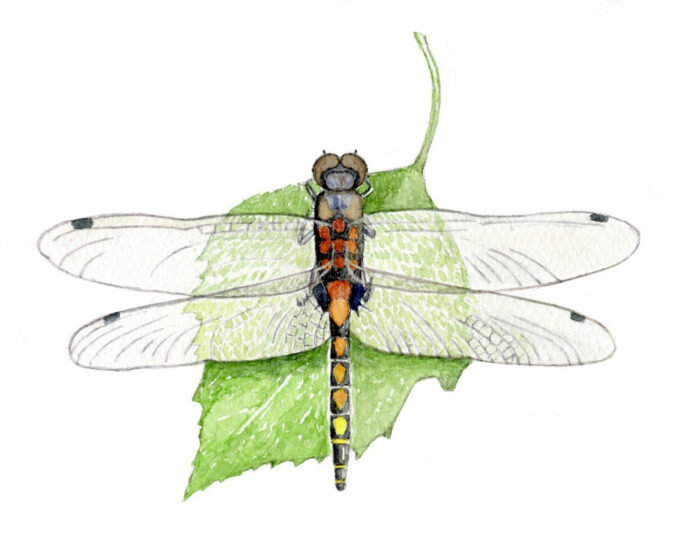Life by The Water
On the western edge of Käyrälampi lake, which opens up in front of you, are mainly sedges and grassy swamps. The area is like a nature’s own safe haven, providing shelter, peace and breeding grounds for many endangered species.
This beautiful water meadow is important for the moor frog (Rana arvalis), as it is a likely spawning ground for these small and protected croakers. In appearance, the moor frog looks very much like the common frog (Rana temporaria), with which it is often confused. The best way to distinguish a moor frog is by the very unusual sound it makes, which is quite quiet. The sound is reminiscent of the burbling of air bubbles coming from a bottle pressed under the surface. The moor frog lives in the same way as the common frog, usually on the edge the land but in the water in spring.
Dragonflies are predators that feed on insects such as mosquitoes, flies and horseflies. There are 63 different species of dragonfly in Finland of which the most abundant and common is the northern damselfly, or spearhead bluet (Coenagrion hastulatum). It was named after the distinctive markings on the second segment of the male’s abdomen that resembles a spear.

The rarer, large white-faced darter (Leucorrhinia pectoralis) has been spotted on the shore in front of you, where it is also likely to breed. This is a protected species in the lush and rich water bodies of southern Finland. This dragonfly is easily recognised by the yellow spot on the rear part of its body, which clearly distinguishes it from other dragonflies. The large white-faced darter thrives in sheltered pools in the reed beds where aquatic vegetation is abundant. These sheltered water bodies provide the perfect habitat for this species.
Conservation is important in dragonfly habitats, as many species are sensitive to environmental changes. Water pollution, deforestation and climate change are contributing to the disappearance of dragonflies from their habitats.
Updated 7.2.2024